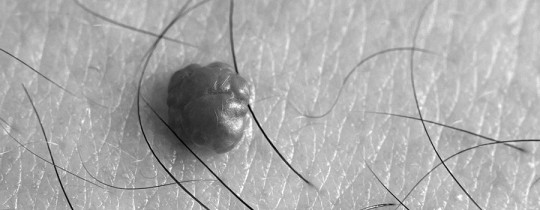HPV – The human papillomavirus virus

The human papillomavirus is a series of viruses that primarily affect the genital region of both men and women. While not itself a dangerous affliction, it has been linked to cervical cancer in women. In 2006, a FDA-approved vaccine was introduced, becoming the first vaccine to actually prevent a type of cancer. While this was a triumph for the medical community, many are still in the dark about HPV and its consequences.
The HPV virus lives in flat pieces of excess skin on the base of the body, most often showing up in the form of warts. There are hundreds of different viruses that can be called the HPV virus, but they often show up on the body in the same way. Many erroneously believe that it is strictly a sexually-transmitted disease, but this is not quite the case. According to WebMD, HPV travels through any exchange of bodily fluids, such as blood, mucus or semen. Having an infection around the genital area however, greatly increases your chance to getting it.
There are approximately 20 million people in the United States alone who have contracted or still have the virus. Almost half of today’s youth have some documented traces of the virus in them, though it is not exclusive to them. 19% of women aged 50-59 have been afflicted with HPV.
Symptoms
The most important thing to know about the symptoms of HPV is that they are most undetectable. While some may think this is positive, it actually has a negative effect. This has allowed the virus to largely go unnoticed and spread more easily. When there are visible symptoms however, the virus often appears in the form of genital warts.
The most pressing issue involving the disease is its ability to cause cancer. The most common type caused by the virus is cervical cancer, but HPV is also known to have spread cancer in other parts of the anal and genital area.
As mentioned before, the are several types of HPV, and only a couple can actually be classified as “high-risk”. Most of the other types are deemed low-risk, and do not pose any damaging health risks. HPV strains 16 and 18 are the most serious and actually make up 70% of all cervical cancer cases caused by the Virus. Strains 6 and 11, on the other hand, make up 90% of genital warts cases and pose little harm.
Prevention
There are many preventative measures one can take to avoid receiving a sexually-transmitted disease, but one should probably get the vaccine if they want to completely prevent it. The HPV vaccine was introduced in 2006 and has become a mainstay amongst preventative treatments instituted by family doctors and practitioners alike. Doctors still insist that abstinence is probably the most effective method of prevention, but again it does not necessarily spare one from infection.
It is recommended that women in particular take the vaccine at at age of 11 or 12, where its effects should last for up to five years. It is often taken in late-adolescence as well, but doctors do not recommend taking it in middle age. The vaccines have not been fully tested on adult women, so doctors are avoiding this uncertainty.
The vaccination is taken in three shots over six months, and the patients must use the same type of vaccine every time. As for men, they are able to take the Gardasil brand vaccine, but its only major effect is the prevention of genital warts.
Treatment
If someone is afflicted with HPV, then the vaccine will not help them get rid of the virus. There are however, treatment options available. While doctors still insist that the easiest solution is simply to wait for the genital warts to leave, some drastic measures are taken to forcibly remove them, especially if the strain is harmful.
The first one of these is cryotherapy, which involves removing the warts through freezing them. Another solution is to perform a cone biopsy, which effectively removes part of the tissue from the cervix . This helps in two ways. First, it removes a good portion of the virus from the affected area, but it also helps in detecting the nature of the strain. There is also the option of using the LEEP (Loop Electrosurgical Excision Procedure) method. Doctors uses a fine, heated wire to remove skin from the cervix without harming it. For this, the patient must be anesthetized, but it is nevertheless a precise way to remove the viral infection.
